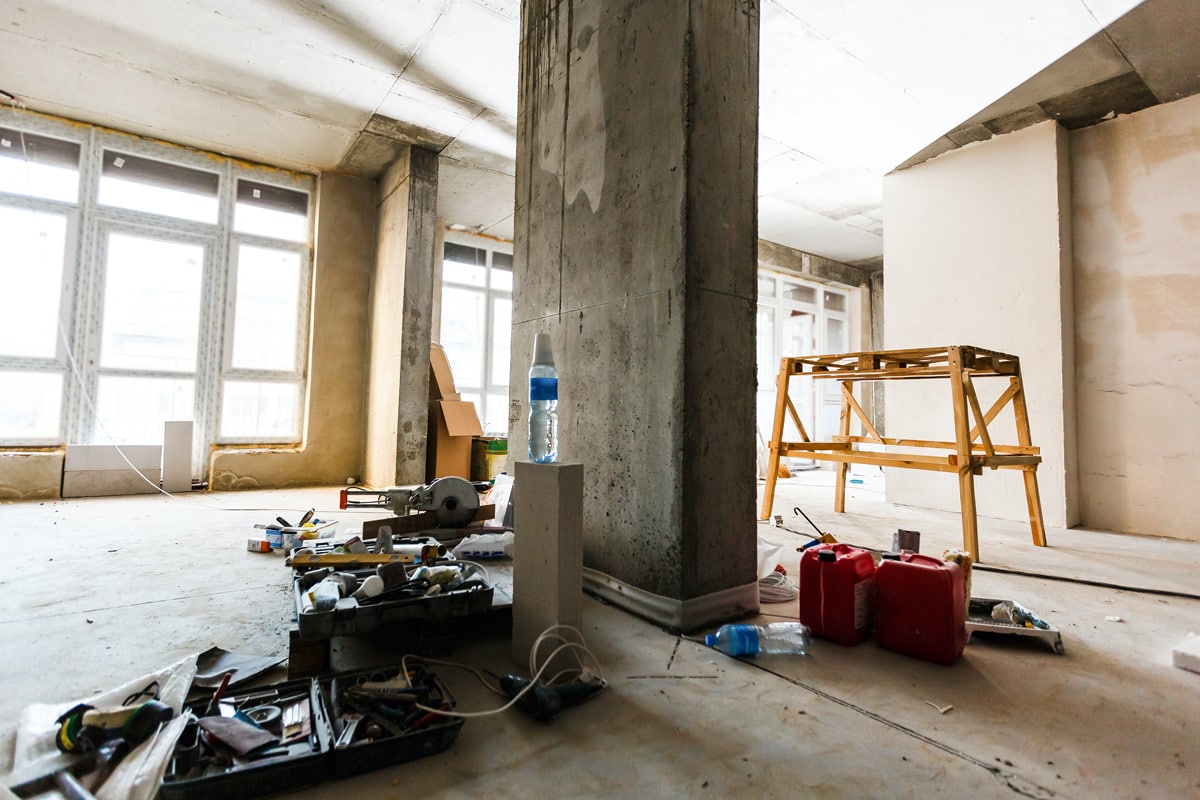A Licence to Alter: Making Improvements to Leasehold Property
If you’re planning home improvements in a leasehold property you may need what is known as a licence to alter. Here’s what a licence to alter is, when you need one and how to apply for one.
What Exactly is a Licence to Alter?
A licence to alter is permission to change or improve a property that is owned on a leasehold basis. If you want to renovate, extend or develop a leasehold property then you might need a 'licence to alter'. Licences to alter apply to both residential leases and commercial leases.
A licence to alter is official written permission from the landlord to carry out the work.
The licence to alter exists so that the building’s owner or other leaseholders or tenants in the same building are not adversely impacted by any improvements you might want to do.
A licence to alter, known as an LTA for short, is sometimes also known as a licence for alterations.

Access our selection of exclusive, high-yielding, off-market property deals and a personal consultant to guide you through your options.
Do I Need a Licence to Alter?
You will only need a licence to alter if you have a leasehold property. Flats or apartments are mostly owned on a leasehold basis. While most houses are owned on a freehold basis some may be leasehold, however.
Licences to alter generally apply if you want to make what is known as a material or structural alteration.
Whether you need a licence to alter depends not only on the work you plan on carrying out but whether or not your lease states that a licence is needed for that work.
A licence to alter is not the same thing as planning permission.

Alterations You May Need a Licence-to-Alter For
Types of home improvements you may require a licence to alter for include:
- Alterations to the structure of the building.
- Removing internal walls and also moving or adding internal walls.
- Creating a new doorway or opening in a wall.
- Installing or replacing windows.
- Moving or installing an additional bathroom or ensuite bathroom.
- Installing or changing heating systems/central heating.
- Changing the flooring type, especially from carpet to a hard floor, which could increase noise levels.
- Extensions, such as a loft conversion.
Alterations a licence to alter is not normally needed for:
A licence to alter is not normally needed for minor cosmetic works and minor repairs nor interior painting and decorating. A licence to alter may not be needed for replacing an existing kitchen or replacing an existing bathroom. It is prudent to check with your lease to find out whether or not a licence to alter is required, however.
How to Apply for a Licence to Alter
Read the lease to find out what improvements are permitted and what a licence to alter is needed for. There should be a clause in the lease covering this issue.
Leases often divide alterations into those which are not permitted at all (which are regulated by an absolute covenant) and those which are permitted with the landlord’s consent (which are regulated by a qualified covenant).
Where an alteration is not permitted at all an alternative option might be to apply to the landlord to waive the restriction in the lease.
Next, find the right party to apply to. Licences to alter are usually granted by your landlord. In some cases, your landlord may also be a leaseholder in which case a licence will need to be applied for from their landlord or freeholder.
A licence to alter may be applied for by making both informal and formal approaches to the landlord.
In the first instance, it is a good idea to make an informal approach to the landlord. Outline the improvements you wish to carry out. The landlord should be able to give an indication of whether a licence to alter is required, what other information they will require and what the procedure is, for making a formal application for a licence to alter.
If a licence to alter is necessary you can then make a formal application. This application will need to give a more detailed explanation of the alterations you wish to carry out.
An application for a licence to alter may need to include relevant plans, drawings or calculations where necessary. These may need to be prepared by a relevant expert. For example, an application to remove an interior wall may need to be supported by plans and calculations from a structural engineer.
An application for a licence to alter may also need to include other details, such as:
- Details of how the work will be carried out.
- Specifications for materials.
- A schedule of conditions for the property.
- A timetable for the work to be carried out.
- Risk assessments.
- Details of what measures will be taken to mitigate disturbance to other residents.
The granting of a licence to alter is usually conditional upon other relevant consents being applied for. These can include planning permission, building regulations approval, party wall consent and listed building consent. You may also require consent from your lender if you have a mortgage.
Assuming it is granted a licence to alter is issued in written form by way of a licence deed, or sometimes a letter licence for simple works.
Applications for a licence to alter can be complex in many cases. If necessary you may need the help of a surveyor and/or lawyer who is experienced in licences to alter to help prepare your application and progress it with the landlord.

The Costs
A landlord is entitled to charge their reasonable costs in connection with granting a licence to alter.
A leaseholder can be expected to pay the cost of any professional advice the landlord needs to take in connection with the application, eg. advice from a surveyor and drafting of the licence to alter by a solicitor.
Where the works carried out are inspected by the landlord’s surveyor or another adviser the leaseholder will be expected to pay the cost of this. The landlord is generally entitled to inspect the works at commencement, periodically during the work, and at their completion.
In some cases, such as a loft conversion, a landlord may request a premium or lump sum payment based on the increase in the value of the lease that the improvement would offer.
Can a Licence-to-Alter be Refused?
Landlords can refuse a licence to alter for a number of reasons. These include that the planned alterations will affect the structure of the building, the value of their interest in the building, or adversely impact other leaseholders.
Landlords cannot refuse a licence to alter where the work being carried out is required by law. A licence to alter must still be applied for, however.
In law, a landlord’s consent to alter must not be unreasonably withheld. If a licence to alter is unreasonably refused it may be necessary to take legal action against the landlord.
If necessary, you may need the help of a surveyor and/or lawyer who is experienced in licences to alter to help with these issues.
What Can Happen If I Do Not Get a Licence to Alter?
Failure to obtain a licence to alter when it is required is a breach of the lease.
If you carry out works that require a licence to alter without a licence the landlord can require you to reverse the works you have carried out. They may also be entitled to claim compensation for any damage done. In extreme cases, the lease may be forfeit.
It can be difficult or impossible to sell a property where a licence to alter has not been obtained when it should have been. Any future purchaser’s solicitor may highlight this during the conveyancing procedure.
A property that lacks a licence to alter when it is required may also be impossible to mortgage or remortgage and may put a borrower in breach of their mortgage terms.
It is generally much more difficult and might be more expensive to obtain a licence to alter retrospectively, ie. after or during the work rather than before it is started.
This article is intended only as general guidance and not intended to form legal advice on the subject of licences to alter. It is recommended to take advice from a solicitor who is experienced in leasehold law and in applying for licences to alter.
